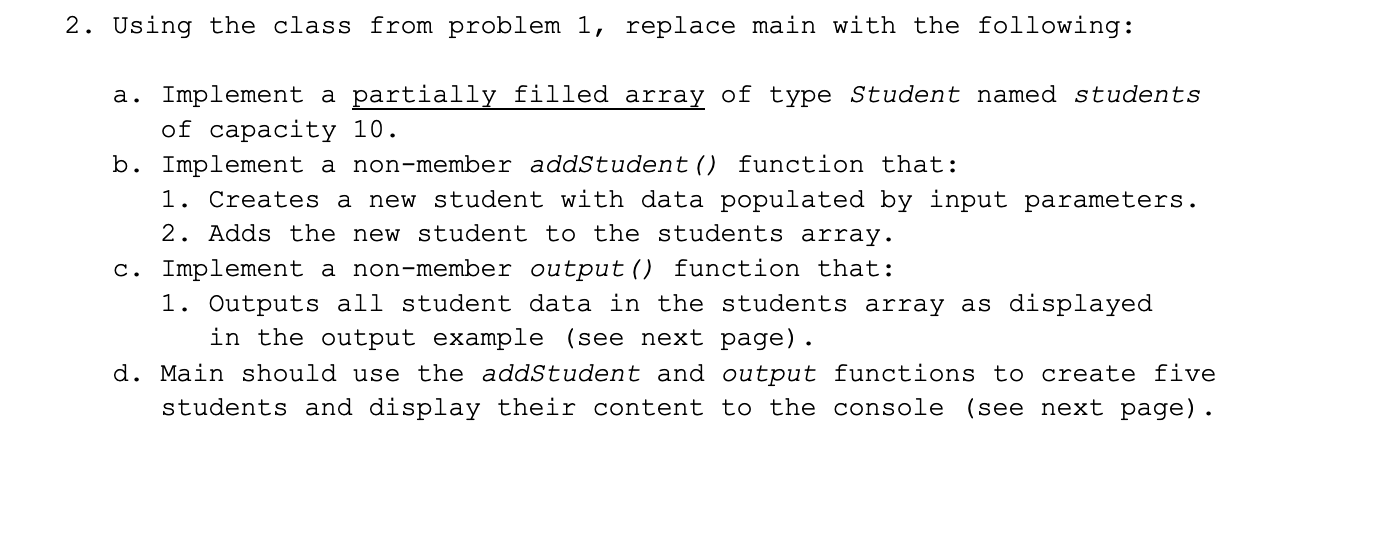2. Using the class from problem 1, replace main with the following: a. Implement a partially filled array of type Student named students of capacity 10. b. Implement a non-member addStudent () function that: 1. Creates a new student with data populated by input parameters. 2. Adds the new student to the students array. c. Implement a non-member output () function that: 1. Outputs all student data in the students array as displayed in the output example (see next page). d. Main should use the addStudent and output functions to create five students and display their content to the console (see next page).
I'm stuck on this question and I don't know how I should be approaching this. I already have the grading
--------------------
Part 1 code:
//q1.cpp - G.Tejada
#include <iostream>
#include <string>
using namespace std;
class Student {
public:
Student(): exam_1(80), exam_2(100) {}
void getGrade() const {
if (getCalc() >= 90 && getCalc() <= 100) {
cout << "A";
}
if (getCalc() >= 80 && getCalc() < 90) {
cout << "B";
}
if (getCalc() >= 70 && getCalc() < 80) {
cout << "C";
}
if (getCalc() >= 60 && getCalc() < 70) {
cout << "D";
}
if (getCalc() >= 0 && getCalc() < 60) {
cout << "F";
}
}
private:
string name;
int exam_1;
int exam_2;
int getCalc() const {
return (exam_1 + exam_2) / 2;
}
};
int main() {
Student s1;
s1.getGrade();
}

Trending now
This is a popular solution!
Step by step
Solved in 3 steps with 1 images









